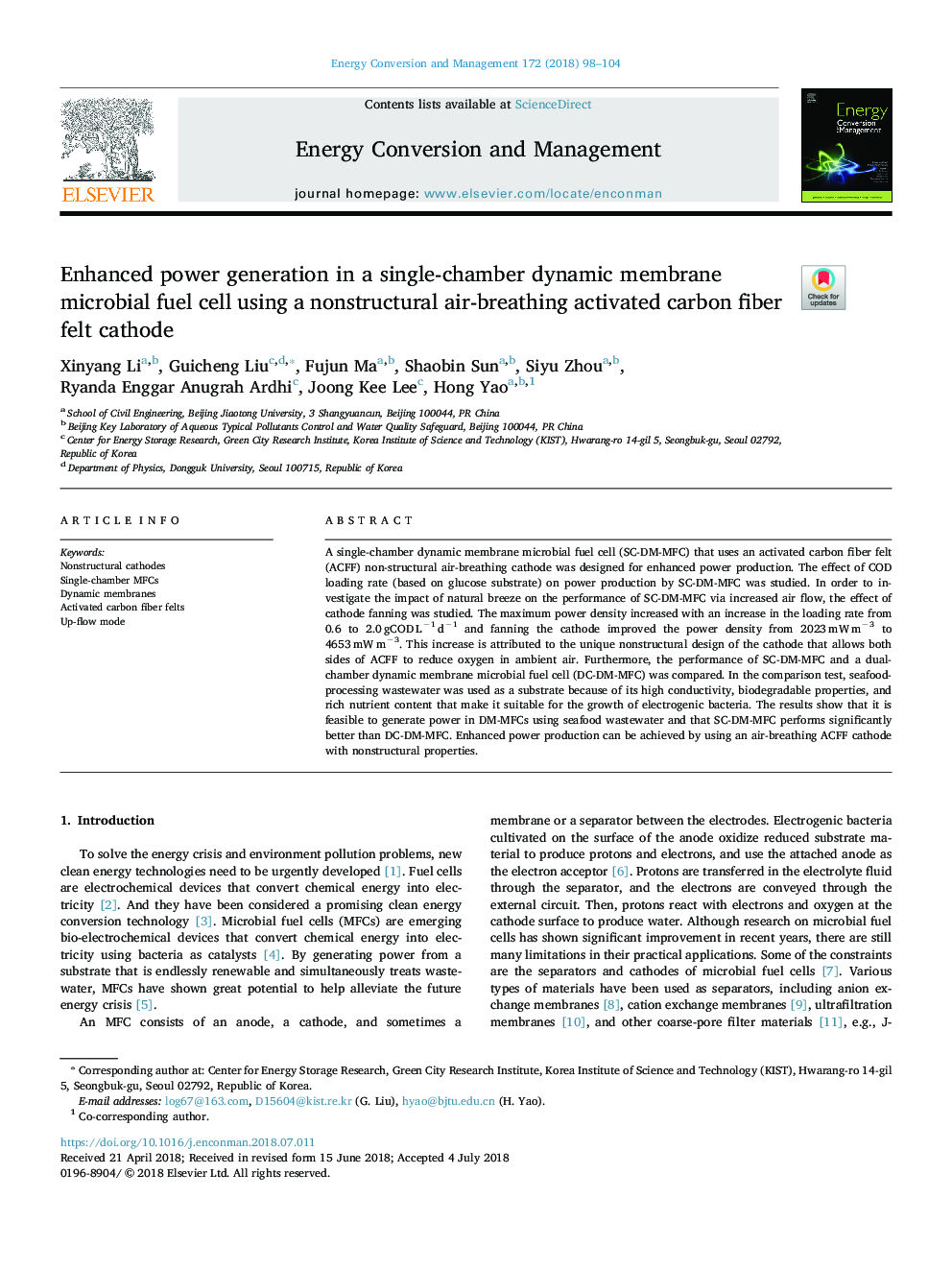| Article ID | Journal | Published Year | Pages | File Type |
|---|---|---|---|---|
| 7157963 | Energy Conversion and Management | 2018 | 7 Pages |
Abstract
A single-chamber dynamic membrane microbial fuel cell (SC-DM-MFC) that uses an activated carbon fiber felt (ACFF) non-structural air-breathing cathode was designed for enhanced power production. The effect of COD loading rate (based on glucose substrate) on power production by SC-DM-MFC was studied. In order to investigate the impact of natural breeze on the performance of SC-DM-MFC via increased air flow, the effect of cathode fanning was studied. The maximum power density increased with an increase in the loading rate from 0.6 to 2.0â¯gCODâ¯Lâ1â¯dâ1 and fanning the cathode improved the power density from 2023â¯mWâ¯mâ3 to 4653â¯mWâ¯mâ3. This increase is attributed to the unique nonstructural design of the cathode that allows both sides of ACFF to reduce oxygen in ambient air. Furthermore, the performance of SC-DM-MFC and a dual-chamber dynamic membrane microbial fuel cell (DC-DM-MFC) was compared. In the comparison test, seafood-processing wastewater was used as a substrate because of its high conductivity, biodegradable properties, and rich nutrient content that make it suitable for the growth of electrogenic bacteria. The results show that it is feasible to generate power in DM-MFCs using seafood wastewater and that SC-DM-MFC performs significantly better than DC-DM-MFC. Enhanced power production can be achieved by using an air-breathing ACFF cathode with nonstructural properties.
Keywords
Related Topics
Physical Sciences and Engineering
Energy
Energy (General)
Authors
Xinyang Li, Guicheng Liu, Fujun Ma, Shaobin Sun, Siyu Zhou, Ryanda Enggar Anugrah Ardhi, Joong Kee Lee, Hong Yao,
